Op 5 juni heeft Milinda Hoo de Jaarprijs Cuijpers-Opdenakker 2025 ontvangen voor haar artikel “The Power to Impress and Impressing to Power”.

Milinda Hoo is de winnaar van de Jaarprijs Cuijpers-Opdenakker 2025. De prijs is uitgereikt op 5 juni. De auteur heeft die middag de NINO/EOL-voorjaarslezing gehouden over het onderwerp van haar winnende artikel: koningschap in Baktrië.
NINO en Ex Oriente Lux reiken sinds 2021 samen een prijs uit voor het beste wetenschappelijke artikel in Nederland, geschreven door een jonge wetenschapper over het Oude Nabije Oosten (incl. Egypte). De prijs wordt eens in de twee jaar uitgereikt; het prijzengeld is € 1000. De Jaarprijs Cuijpers-Opdenakker is ingesteld door en vernoemd naar C.P.M. Cuijpers en R.J.G. Opdenakker.
Milinda Hoo, The Power to Impress and Impressing to Power, in: C. Michels, Hans Beck, Achim Lichtenberger (eds.), The Same, but Different? Monarchical Rule and Representation in the Hellenistic World (2024). DOI: 10.25162/9783515136426
This paper (published in October 2024) focuses on Baktrian kingship in Central Asia – the distant ‘forgotten’ regions of the ancient East – and seeks to shed new light on its embeddedness in global historical dynamics across Afro-Eurasia in the third and second centuries BCE. It argues that Central Asian developments of kingship and royal representation during these centuries were not isolated, marginal, or insignificant to those in West Asia, Egypt, and the Mediterranean, but that they should be considered innovative translocal (glocal) phenomena of the entangled, globalized world of Hellenistic Afro-Eurasia. In this world, defined by transimperial and supralocal connections and interactions, kingship and royal power were shaped by dynamic networks of influence, ideological interplay, and cultural capital generated by exchange. Hellenistic kingship practices were, however, neither distinctly Macedonian or Greek, nor globally uniform, but rather translocally networked practices of sameness and differentiation. In Baktria (modern Afghanistan and parts of Tajikistan and Uzbekistan), the historical and archaeological contexts within which such practices took place strongly indicate conscious efforts by regional kings to participate in broader networks of power and prestige, as they engaged with visual languages of legitimacy and distinction that resonated both globally across Afro-Eurasia and locally in Central Asia.
By assessing the spaces, forms, and strategies of the Baktrian kings to differentiate themselves from (il)legitimate others, this paper surveys the clues to kingship in the fragmentary evidence at hand, focusing on three interrelated articulations of royal representation: charismatic achievements, prestigious material display, and the ruler’s relationship with the divine. The assessment demonstrates that kingship in Baktria, as in other Hellenistic empires and post-satrapal kingdoms, was profoundly charismatic in nature, thriving and maturing in a dynamic and competitive world of war. Central Asian kingship was neither natural nor absolute but contingent upon claims to royal power based on (impressions of) grand military success, material exhibits of grandeur, and increasing heroization of a strong victorious leader in a highly competitive milieu of rival kings and adversaries. While royal legitimacy relied on the local acceptance of soldiers, administrators, elites, and to an extent the broader populace, Baktrian rulers articulated an ideology of kingship that deeply engaged with and developed from translocally networked and interconnected practices of power and differentiation across Hellenistic Afro-Eurasia.
Een Nederlandstalige bewerking van het winnende artikel wordt gepubliceerd in Phoenix, het ledenmagazine van Ex Oriente Lux.
Dit is de vierde uitreiking van de Jaarprijs voor jonge schrijvers van wetenschappelijke artikelen op het gebied van geschiedenis en cultuur van het oude Nabije Oosten in samenhang met mogelijkheden tot popularisering.
Alle artikelen waren van uitstekende kwaliteit, geschreven in gerenommeerde tijdschriften of als bijdragen voor congresbundels. Er waren artikelen bij op het gebied van de archeologie en geschiedenis van het Nabije Oosten en de Egyptologie.
Het winnende artikel is een uitstekende verzameling van tekstuele en archeologische bronnen op het gebied van Baktrische koningschap. Het artikel biedt een uitgebreid overzicht voor het evalueren van een minder bekend thema en regio. De schrijfstijl is aansprekend en, ondanks de lange tekst, niet herhalend of vermoeiend.
Runner-up is het artikel van Jesse Millek en Lutz Popko, ‘Peppermint’s Phony Pharaonic Past: Dispelling the Myth of Mentha piperita in Ancient Egypt’. Hij zet een populaire mythe in de focus – het voorkomen van pepermunt in het oude Egypte. Deze uitspraak is vaak te vinden op de verpakking van pepermuntthee vandaag. Het artikel is ingedeeld in twee secties; de geschiedenis van deze mythe wordt door de inzendende auteur in het eerste deel opgepakt. Deze opener is erg attractief en vooral ook voor een breder publiek geschikt.
De jury feliciteert Milinda Hoo van harte met het winnen van de prijs. We willen ook de runner-up en de andere inzenders feliciteren met hun uitstekende bijdragen en hen aanmoedigen verder te gaan met hun wetenschappelijke werk.
